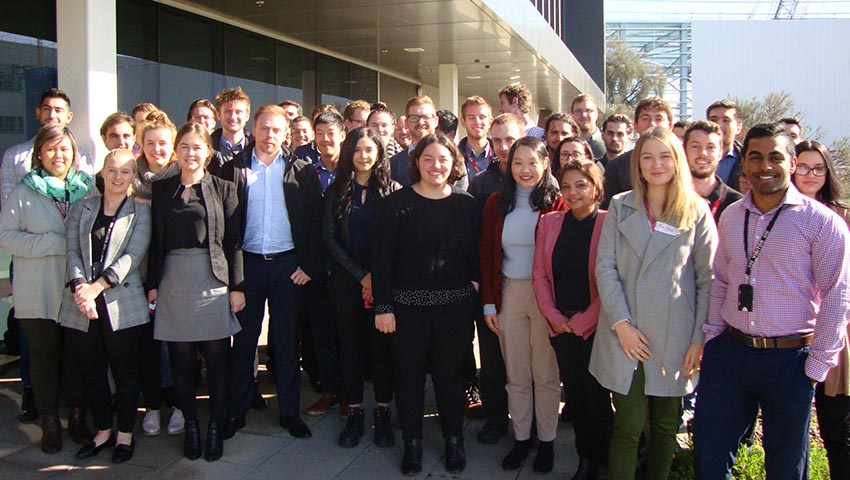Fifty graduates visited the Osborne Naval Shipyard this week to learn more about the newest part of BAE Systems' business, ASC Shipbuilding, and witnessed first-hand the rapidly evolving shipyard where the nine anti-submarine warfare Hunter Class frigates will be built.
To continue reading the rest of this article, please log in.
Create free account to get unlimited news articles and more!
The first-year graduates, from a range of disciplines including engineering, human resources, project management and commercial, ICT and finance, were briefed by ASC Shipbuilding director Jim Cuthill and went on a guided tour of the shipyard.
Cuthill said shipbuilding is now seen as a viable career opportunity, as opposed to the cyclical nature of the industry in the past.
"With continuous naval shipbuilding in Australia, people can enter the industry and grow, develop and transfer their skills as they move from one program to the next," he said.
Around 80 graduates joined the company earlier this year, bringing the current number to 120 with more to join in 2020. During their two-year program, the graduates will rotate across various programs and business units.
BAE Systems’ retention rate for graduates is high with around 90 per cent going on to permanent employment, helping to fill the pipeline of highly capable technical specialists and leaders for the future.
Cuthill added, "With a program the size and duration of the Hunter Class Frigate Program, we’re going to need more graduates, apprentices and people who are passionate about delivering superior capability for Australia’s defence forces."
This approach will pay off – by the end of the Hunter program, it’s estimated that around 75 per cent of the workforce will have joined the company through either the graduate or apprenticeship pathways.
The nine Hunter Class frigates will be based on the BAE Systems Type 26 Global Combat Ship currently under construction for the Royal Navy, and will replace the eight Anzac Class frigates when they enter service beginning in the late 2020s. The Hunter Class is billed as an anti-submarine warfare-centric vessel delivering an advanced ASW capability to the Royal Australian Navy at a time when 50 per cent of the world’s submarines will be operating in the Indo-Pacific region.
The $35 billion program sees ASC Shipbuilding become a subsidiary of BAE Systems throughout the build process beginning in 2020 at the Osborne Shipyard in South Australia, creating more than 4,000 jobs.
BAE Systems expects the Australian industry content for the Hunter Class build will be 65-70 per cent, which will create and secure thousands of jobs for decades. At the end of the program the Commonwealth will resume complete ownership of ASC Shipbuilding, thereby ensuring the retention in Australia of intellectual property, a highly skilled workforce and the associated equipment.
SEA 5000 is expected to support over 500 Australian businesses who have been pre-qualified to be part of the Hunter Class supply chain, with the Australian steel industry in particular benefiting from the 48,000 tonnes of steel required to build the ships.
Stephen Kuper
Steve has an extensive career across government, defence industry and advocacy, having previously worked for cabinet ministers at both Federal and State levels.

 Login
Login








